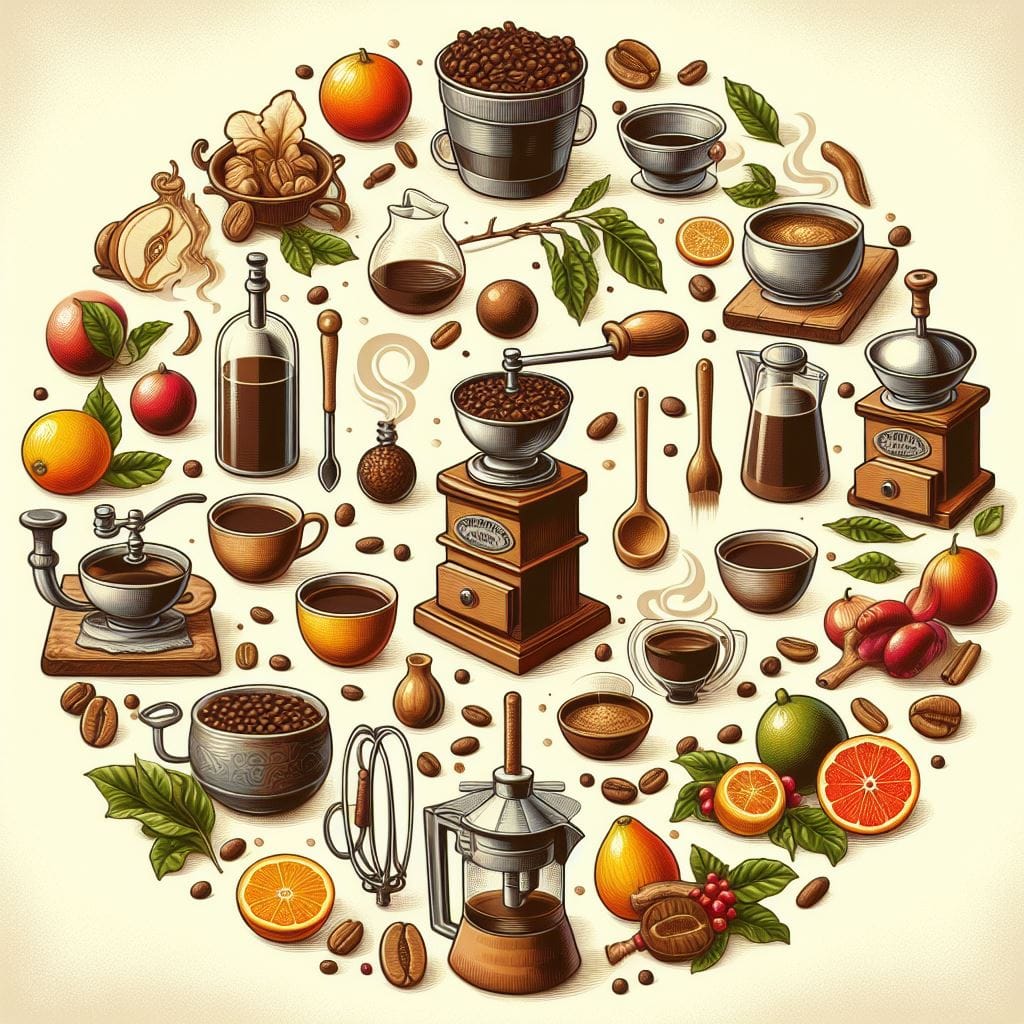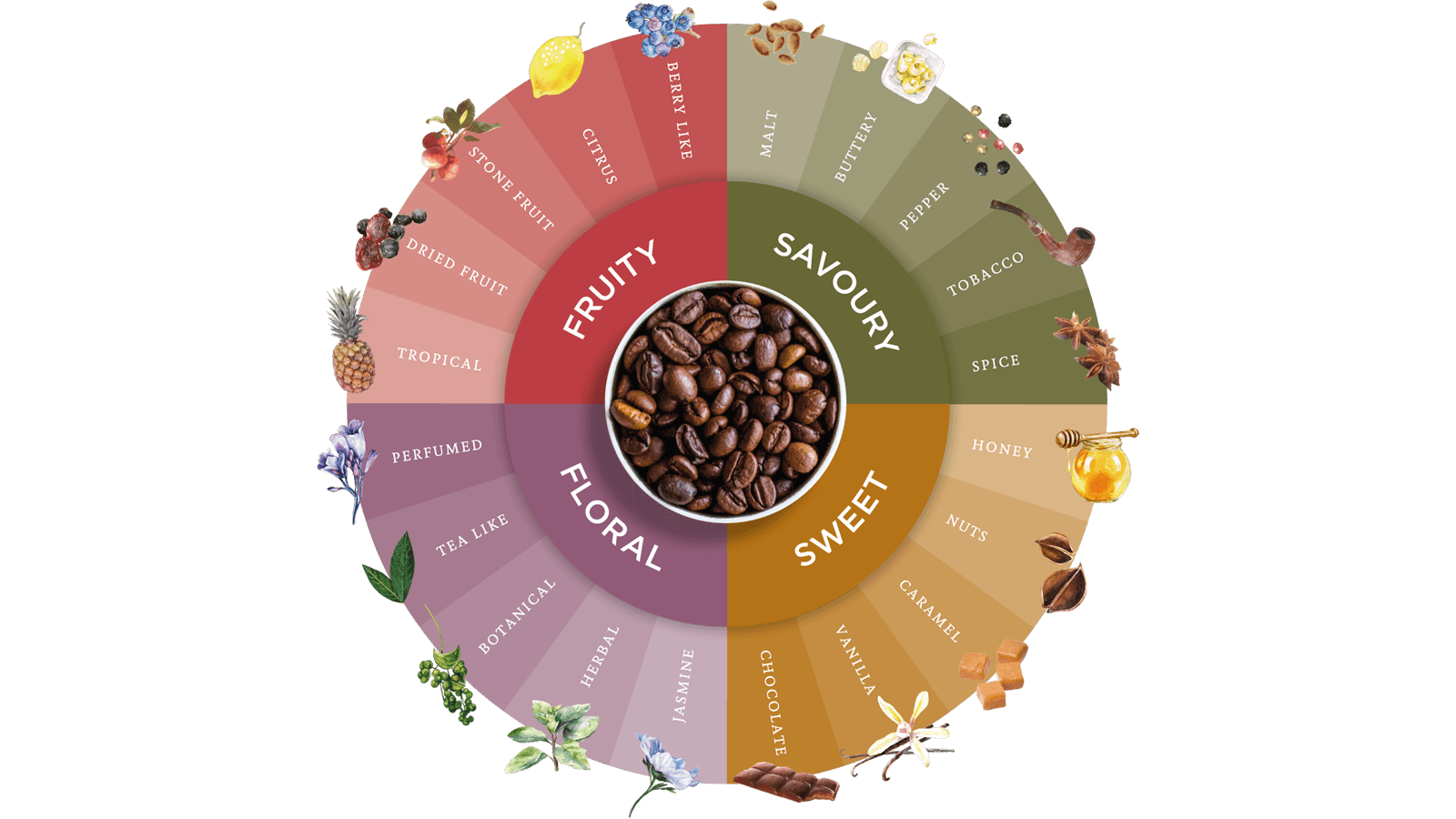Prepare your senses for a flavor revelation! We’ll introduce you to the primary taste categories in coffee and teach you how to start identifying them in your daily brew. Your journey to becoming a coffee tasting expert begins here!
Imagine sipping your coffee and not just tasting “coffee” but also hints of fruit, chocolate, nuts, or even spices. That’s the magic of coffee tasting – unlocking the symphony of flavors hidden within each bean.
In this article, we’ll explore the primary taste categories in coffee and equip you with the knowledge to identify those subtle nuances in your cup.
The Basic Tastes: The Foundation of Flavor
Just like a painter uses primary colors to create a masterpiece, coffee relies on basic tastes to build its flavor profile. These basic tastes include:
- Sweetness: Often associated with sugars, fruit flavors, or chocolate notes. This can be the natural sweetness of the coffee bean itself, or it can be developed through the roasting process. Think of the sweetness in a ripe strawberry or the caramel notes in a chocolate bar.
- Acidity: That pleasant tanginess or brightness that adds complexity, like a squeeze of lemon or a bite of green apple. Acidity is often more pronounced in lighter roasts and can vary depending on the coffee’s origin and processing method.
- Bitterness: A sharp, sometimes unpleasant taste that can be caused by over-extraction or dark roasts. While some bitterness can be desirable, too much can make the coffee taste harsh and unpleasant. Think of the bitterness in dark chocolate or the sharp taste of grapefruit peel.
Flavor Categories: A World of Taste
Beyond the basic tastes, coffee offers a vast spectrum of flavors, often categorized into these main groups:
- Fruity: Think berries (like blueberry or raspberry), citrus fruits (like lemon or orange), stone fruits (like peach or apricot), or even tropical fruits like mango or pineapple. The specific fruit flavors you perceive can depend on the coffee’s origin, variety, and processing method.
- Chocolatey: Ranging from milk chocolate to dark chocolate, sometimes with hints of cocoa or mocha. These flavors are often found in coffees from Central and South America, particularly those grown at higher altitudes.
- Nutty: Notes of almonds, hazelnuts, pecans, or even peanuts. Nutty flavors can be developed through the roasting process or be inherent to the coffee bean itself.
- Spicy: Cinnamon, clove, nutmeg, or even black pepper. These warm and comforting flavors are often found in coffees from Indonesia and India.
- Floral: Delicate floral hints like jasmine, rose, or lavender. These aromas and flavors are often associated with Ethiopian coffees, particularly those from the Yirgacheffe region.
- Earthy: Think soil, mushrooms, or even a hint of forest floor. Earthy notes can be found in coffees from Sumatra and Indonesia, often attributed to the unique soil conditions and processing methods in those regions.
Identifying Flavors: A Sensory Exploration
Now that you know the main flavor categories, it’s time to put your senses to the test! Here are some tips for identifying flavors in your coffee:
- Start with the Aroma: The aroma provides a preview of the flavors you might encounter. Take a deep inhale and try to identify any familiar scents.
- Take a Small Sip: Let the coffee coat your tongue and pay attention to the initial flavors that hit your palate.
- Slurp and Swirl: Slurping the coffee aerates it, releasing more aromas and flavors. Swirling it in your mouth helps distribute the coffee across your taste buds.
- Focus on Specific Areas: Different parts of your tongue are more sensitive to certain tastes. The tip of your tongue detects sweetness, the sides detect sourness, and the back detects bitterness.
- Use a Flavor Wheel: Refer to a flavor wheel to help you identify and categorize the flavors you perceive.
- Practice Makes Perfect: The more you taste and pay attention to the nuances, the more refined your palate will become.
Describing Flavors: Expressing Your Experience
Once you’ve identified some flavors, try to describe them using specific and evocative language. Here are some examples:
- “This coffee has a bright acidity like a Granny Smith apple, with a hint of dark chocolate in the finish.”
- “I’m getting notes of ripe berries and a hint of cinnamon in the aroma, with a smooth, buttery mouthfeel.”
- “This coffee has a balanced flavor profile with a medium body and a lingering sweetness like brown sugar.”
Coffee Tasting: A Journey of Discovery
Remember, coffee tasting is a journey, not a destination. It’s about exploring the vast and diverse world of coffee flavors, expanding your sensory vocabulary, and developing a deeper appreciation for this incredible beverage. So grab your favorite cup, awaken your senses, and embark on a flavor adventure!
Up next: Seed 104: II. Brewing for Tasting
In our next article, we’ll delve deeper into the art of tasting, exploring specific techniques and tools to help you analyze and appreciate your coffee like a pro. Get ready to unlock a whole new level of coffee knowledge!






No Comment! Be the first one.